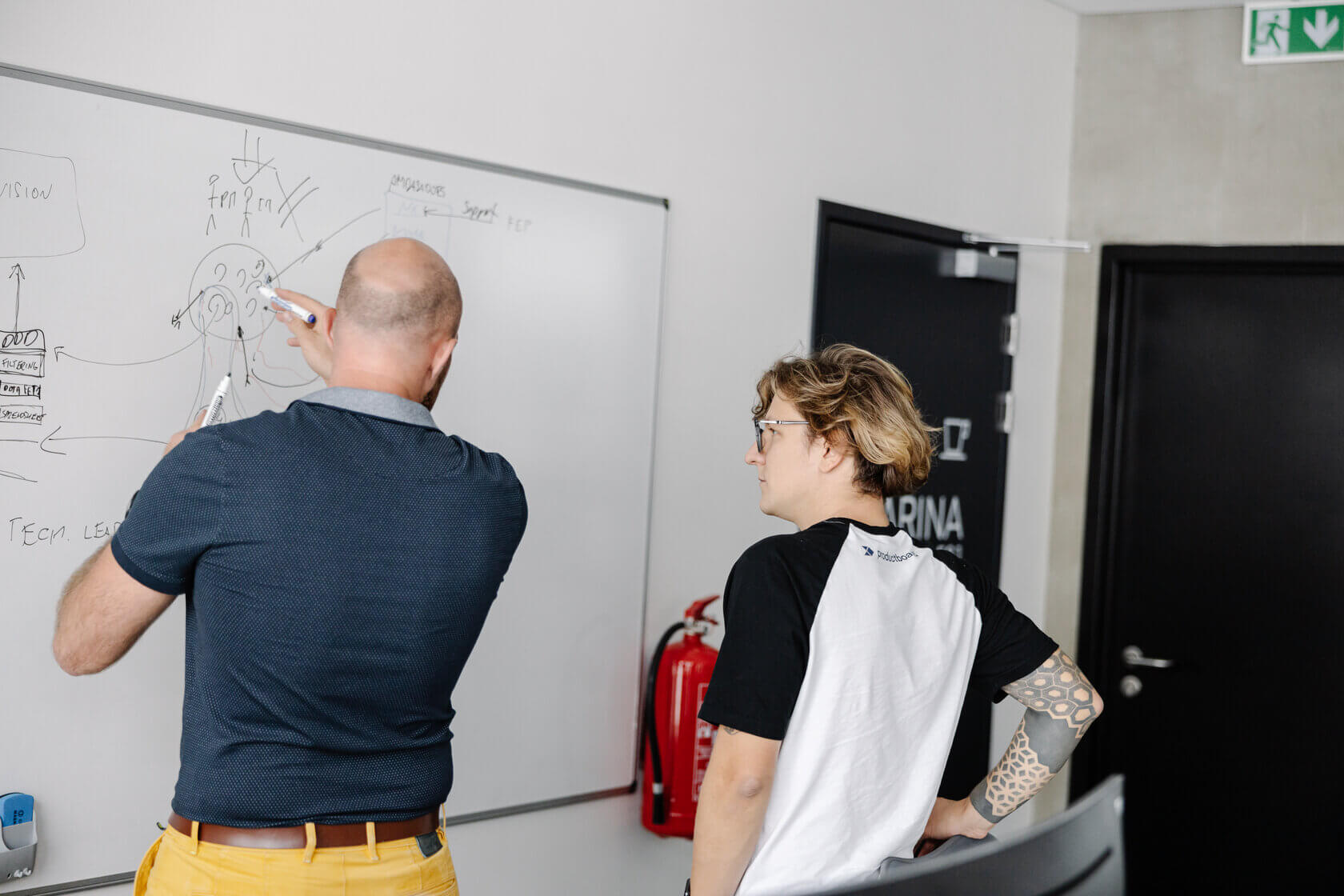20 soft skills every engineering leader should have

In growth conversations where engineers might feel stuck or unsure about where to invest in growth next, I ask them to
- Score how well they think they are doing at each of the items below
- I score how well I see them do as well
- Compare notes and discuss to align
- Take 2-3 items they care about and score <6 on
- Identify opportunities and next steps for improvement
Soft skills are a multiplier often overlooked when thinking about personal, professional, and career growth. 🌱
Here’s an incomprehensive list of soft skills I’ve found worth investing in to increase your impact further.
- Help find the best ideas — cultivate an environment where everyone is comfortable bringing their ideas and creative solutions forward, knowing you judge ideas by merit and not seniority. If you spot something fantastic, be a multiplier. Empower the individual behind the idea, and make them shine.
- Effectively Prioritize— constantly focus on what is most important for the company and team today/tomorrow/next week/month(s). It’s worthwhile to introspect frequently to avoid being pulled into new exciting topics without recognizing the risk of lesser impact and potential.
- Delegation — optimize your impact by seeding growth in others. The key to effective delegation is understanding which tasks are the best use of your time and which tasks are better delegated. A classic example of delegatable work is work you could do easily but would stretch someone more junior.
- Mentoring — help others grow in their role and capabilities. It’s likely you know something they don’t. Such a scenario makes an opportunity for you to be a multiplier and a mentor. Don’t miss out! Be a good mentor or coach and create a bedrock for building trust and stronger relationships. This might become one of the most fulfilling parts of your job.
- Helping others get promoted — coach to bridge gaps in performance and expectations to reach the next level. Increase others’ visibility, offer to help write up a promo packet and make sure others reflect their actual value and impact on the company. Not everyone is equally good or comfortable with shining the light on themselves.
- Create design and technical documentation —lead by example. Set the bar for what a great design document, specification, documentation, or project brief looks like.
Well-articulated and crafted documents can easily mean the difference between a well-executed project, missed deadlines, and something that never ends up shipping. - Excellent writing skills — can be highly impactful, so write frequently, and don’t be afraid to re-write, edit, refine and iterate to improve. Writing will help clear up your thinking and identify gaps in your thought process and ideas. Sublime writing skills can take years to achieve, but the investment is worthwhile. The larger the organization and the more senior position you have, or what to have, the more critical your writing skills become.
- Proactive communication — anticipate and share information others would want without them asking for it. Sharing information ahead of time, rather than on request. If done right, this can significantly increase trust in you and lead to higher autonomy and freedom.
- Facilitation — get others to talk, discuss, and commit to the right outcome. Ensure everyone feels heard and included, especially the insightful but introverted attendees who aren’t the first or second to speak up on your prompts. The more senior you are, the less you should share your opinion first, if at all.
Remember, your opinion weighs heavier and carries the risk of biasing more junior folks. They might be afraid to speak after you — what if they embarrass themselves? If you want to chip in on discussions, try and save your points to the very last to make sure everyone has a chance to talk first. 10. - Asking great questions — be a good listener and ask questions the other person will enjoy answering. Those who ask questions best can answer questions by asking a question back, guiding those who ask towards the correct answer themselves.
Using open-ended questions (why, what, how) over yes/no questions is a great way to engage in-depth and show you care.
Example: Rather than asking, “Do you think this a good idea?”… try asking: “Tell me how come you think this is a good idea?”

- Leadership and executive communication — understand what valuable communication looks like and what the target audience expects.
A classic example of leadership communication revolves around a specific situation or event, its consequences, the options as we advance from the consequences, which option we are going with, and why.
In such a case, use communication to build confidence and demonstrate: a plan has been thought through and is moving forward. The outcome you want to go for is the leader has one less thing to worry about.
The SCQA model for communication is highly efficient and worth exploring. - Engage with and discuss complicated topics on numerous levels — is when you can explain technical and complex matters to a less-technical audience.
To do this well, you have to meet the audience where they are and then decide whether to go with layman’s terms, the Ph.D. version, or something in-between. It’s important to avoid making anyone feel stupid or like you’re overly supportive. - Choose importance over interest — recognize when it’s time to give up your favorite projects, to free up time, to work on something more substantial.
You’ve built something great. It is a marvel and a true engineering gem. Do the right thing and hand over the ownership to someone else and move on to more meaningful things. Doing this well takes heart and courage. - Inter-company networking and cross-functional awareness — maintain solid ambient awareness of what’s going on in the organization and understand how these map to your team(s) priorities.
The ambient awareness can help you dodge bullets or even disasters.
Small talk, gossiping, and water-cooler chats are essential. - Self-managing your career and growth — Create clarity on your aspirations, and own your destiny through frequent introspection and course correction. Make a plan for your career goals. Understand where you are today, your weaknesses and how you compensate for them and your superpowers and how they can help you get to where you want to go. Check-in with yourself and ask: Am I getting closer? If not, this is an indicator of your need to course correct.
- Receive and learn from negative feedback — do this gracefully without being defensive or rejective. If you can, lean into the feedback. Welcome the feedback and recognize while it might be hard to hear, it will help you become better.
Remember, those sharing the feedback are likely fearing this moment as much as you find it unpleasant.
Use the opportunity to understand where the feedback is coming from. Show empathy and that you care. Not all feedback requires action, but all feedback needs to be understood. - Provide growth-oriented but hard-to-deliver feedback — tell someone, not only when they do good but also when they slip or are not helping themselves or their peers.
Delivering tough-to-hear feedback is hard! If done right the feedback can help build trust, and stronger relations, and lead to better outcomes.
Radical Candor is a great first step in this direction. - Stakeholder alignment, communication, and management — create, provide and share well-crafted communication to a multitude of individuals (i.e. leadership, program managers, ICs, design, and others). Provide clarity by communicating the essentials, and catering to everyone’s needs. Understand when it’s right to bring in partners cross-functionally, when to delegate, and when to lead.
- Align and lead multiple engineers without being a people manager — run a project independently without management support for extended periods. Build trust, provide overview, alignment, and clarity — sometimes with competing priorities.
In a nutshell, help a group of individuals successfully navigate towards a common goal without distraction and roadblocks. - Identify valuable opportunities, define and circulate the idea(s) to align and gather buy-in to finally execute your idea — This is a long winding process, especially in larger organizations. It means capturing valuable business propositions, often in writing. Influence existing systems and priorities, align decision-makers, acquire buy-in, get a headcount, build a project plan, get the go-ahead, and lastly, execution and delivery 🚀







